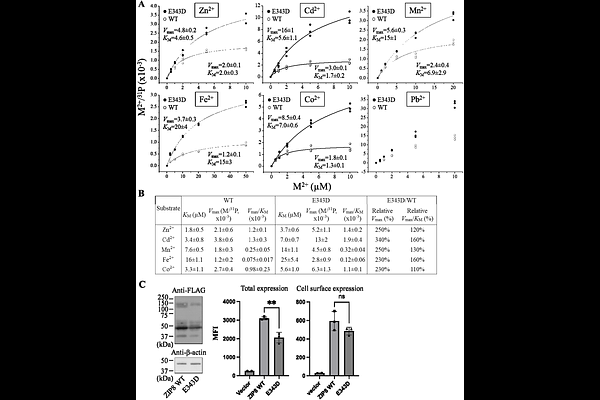Targeting the selectivity filter to drastically alter the activity and substrate spectrum of a promiscuous metal transporter

Targeting the selectivity filter to drastically alter the activity and substrate spectrum of a promiscuous metal transporter
Jiang, Y.; Nikolovski, M.; Wang, T.; MacRenaris, K.; O'Halloran, T. V.; Hu, J.
Abstractd-Block metal transporters play a crucial role in maintaining the homeostasis of life-essential trace elements and are attractive targets for protein engineering aimed to selectively enriching or excluding metals in living organisms. However, systematic efforts to engineer these transporters have been hindered by limited understanding of their transport mechanism and substrate specificity. In this study, we applied a focused-screen approach to ZIP8, a promiscuous d-block divalent metal transporter, by systematically changing three key residues that form the selectivity filter at the entrance of the transport pathway. Screening a library of 48 constructs using an ICP-MS-based transport assay, we identified variants with significantly altered transport activities and/or substrate preferences. The E343D variant exhibited dramatically enhanced activity for all tested metal substrates, a shift in substrate preference, and an expanded substrate spectrum including the non-substrate metals VO2+ and Cu2+. Additionally, we identified lead ion (Pb2+) as a substrate of wild-type ZIP8. These findings suggest that the ZIP fold is highly adaptable and amenable for transporting a wide range of metals with diverse physicochemical properties, making it a promising scaffold to generate novel metal transporters for applications.